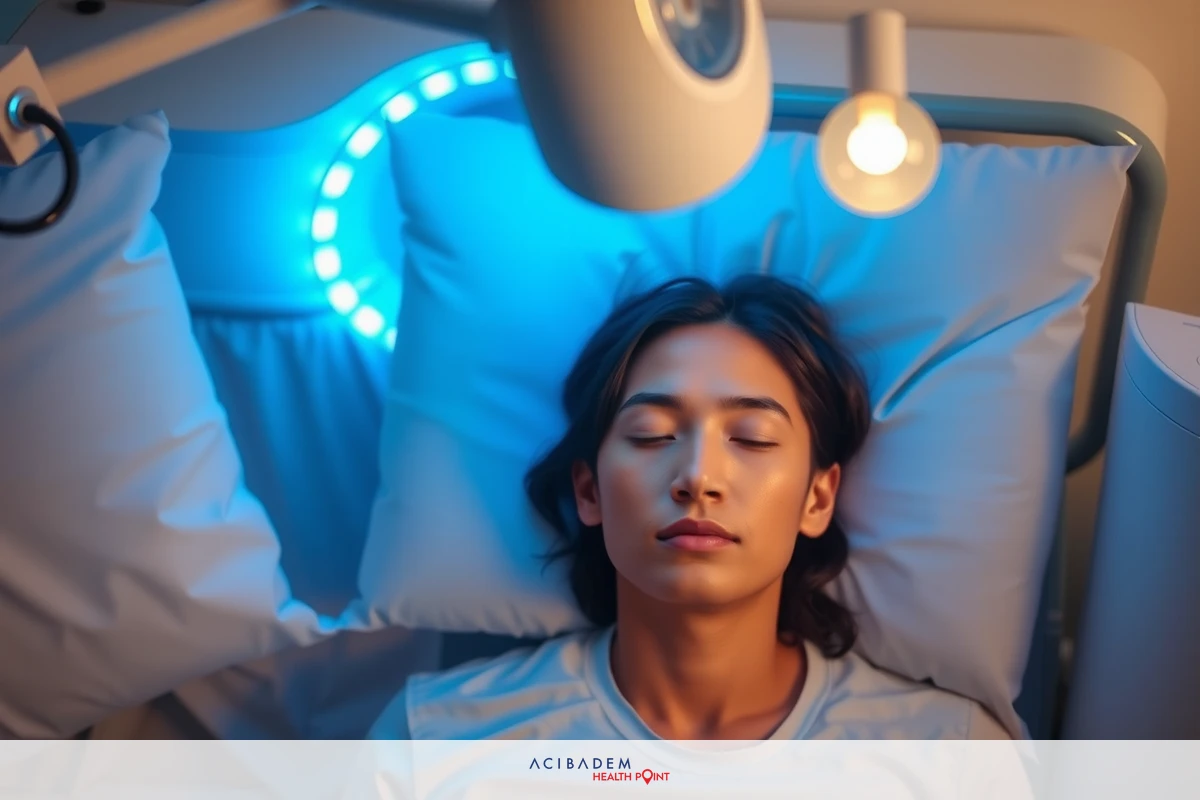How to Lay Down After Rhinoplasty
How to Lay Down After Rhinoplasty Rhinoplasty, commonly referred to as a ‘nose job’, is one of the most common types of plastic surgery. Post-operative care plays an integral role in ensuring that your recovery process goes smoothly and efficiently. The seemingly simple act of laying down or sleeping can become quite complex after this type of surgery.
A key aspect you need to consider during your recovery period is finding a comfortable sleeping position. This not only aids in alleviating discomfort but also promotes healing after rhinoplasty. Strategic placement of pillows for support while sleeping can contribute significantly towards reducing swelling and enhancing comfort levels.
Maintaining proper head elevation while lying down minimizes swelling and accelerates the healing process following rhinoplasty. Adhering closely to these guidelines will go a long way in facilitating a smooth post-operative journey towards a successful transformation.
Finding a Comfortable Sleeping Position
After undergoing rhinoplasty, adjusting your sleeping position can significantly improve your recovery process. You might find that the positions you were previously accustomed to are no longer comfortable or even possible in the immediate post- operative period. It’s essential to keep this in mind and be open to making some adjustments.
A recommended sleeping posture is on your back with your head slightly elevated—this aids in reducing swelling and discomfort. However, it’s worth noting that each individual’s comfort level may vary; what works for one person may not necessarily work for another. Therefore, trial and error might be necessary until you identify a position that best suits you during your rhinoplasty recovery phase.
Sleeping on either side after nose surgery should generally be avoided as it could potentially cause asymmetrical swelling or disrupt the healing of delicate nasal tissues. If lying flat causes discomfort or feels unnatural initially, consider using extra pillows for added support and elevation—a strategy we will delve into deeper detail about further along in this article.
Maintaining an upright position while laying down helps prevent unnecessary pressure on the freshly operated area thereby contributing towards optimal healing outcomes post-rhinoplasty surgery. This stance also reduces any chances of accidental injury when turning over during sleep which could compromise surgical results.
Understanding how to properly lay down following a rhinoplasty procedure is key in ensuring a smooth transition through the recovery phase leading up to fully enjoying the benefits of this transformative nose surgery.
Using Pillows for Support
The use of pillows is an effective strategy to support your body and maintain a comfortable sleeping position during rhinoplasty recovery. An elevation of the head using multiple pillows can help significantly in swelling reduction, thereby increasing sleep comfort. It’s not just about having multiple pillows but strategically placing them to provide optimum support.

Pillows can be used to create a reclining position that aids in reducing pressure on the nose while you rest or sleep. Positioning one pillow under each arm with another two or three stacked behind your back creates an inclined resting surface which promotes blood circulation and reduces fluid accumulation post-nose surgery. Be sure to ensure the arrangement provides adequate neck support as well to avoid developing strain or discomfort over time.
It might take some trial and error before finding the perfect setup that suits your comfort preferences best, so patience is key here too. Some individuals might find specially designed wedge-shaped pillows useful for maintaining an elevated posture without slipping down during their sleep after rhinoplasty surgery. These are widely available in markets both offline and online.
In addition, it’s advisable not only focusing on head placement when considering pillow configuration; also pay attention towards supporting areas like lower back and legs which indirectly contribute towards overall restful experience thus aiding post- operative care process effectively.
Remember, there isn’t necessarily a ‘one-size-fits-all’ approach here – what works best may vary from person-to-person based on individual circumstances including surgical specifics, personal comfort levels among others factors worth accounting into consideration while figuring out most suitable supportive pillow layout specific for yourself following rhinoplasty procedure.
How to Lay Down After Rhinoplasty: Maintaining Proper Head Elevation
Post-rhinoplasty recovery often involves keeping the head elevated, even while sleeping. This might seem like a small detail in the grand scheme of things but it plays a crucial role in enhancing healing and reducing swelling after nose surgery. Ensuring your head is positioned higher than your heart helps to minimize blood flow to the area which can result in decreased swelling.
There are multiple ways you could achieve an ideal level of elevation, including using pillows or adjustable beds if available. Even while sitting down for extended periods during post-operative care, ensure your head remains upright rather than reclining back completely flat against any surface; this practice contributes positively towards speeding up recovery process following rhinoplasty.
The first week after surgery is when maintaining proper head elevation becomes most important as that’s when typically maximum swelling occurs. It’s advised to maintain an inclination of about 45 degrees with respect to body—more isn’t necessarily better because it could lead towards neck discomfort over time due to prolonged unnatural positioning.
One critical aspect worth noting here is ensuring constant vigilance especially during sleep where there’s chance you might unknowingly change positions reverting back into old habits such as rolling onto stomach or sides potentially causing complications like asymmetrical swelling among others detrimental effects hindering smooth healing journey post nose surgery procedure.
It’s essential being patient throughout this period understanding fact that these temporary alterations made within daily routine are all geared towards achieving best possible outcomes from your rhinoplasty operation eventually leading way towards comfortable healthy future devoid unnecessary physical discomfort associated previously with nasal issues prompting need for surgical intervention at first place.
Frequently Asked Questions
How soon after rhinoplasty can I sleep on my side or stomach?
It's generally recommended to avoid sleeping on your side or stomach for at least two weeks following a rhinoplasty procedure. This precaution helps prevent any undue pressure on the nose that could disrupt healing and lead to asymmetrical swelling.
Are there specific types of pillows I should use for support during recovery?
While there's no 'one-size-fits-all' answer, many people find wedge- shaped pillows helpful for maintaining an elevated position while sleeping. However, it ultimately boils down to personal comfort—use whatever type of pillow allows you to rest comfortably while keeping your head elevated.
Is it normal to feel discomfort when trying new sleeping positions after surgery?
Yes, some level of discomfort is normal initially as your body adjusts to new sleeping positions post-rhinoplasty. Remember, these changes are temporary and aimed towards ensuring a smooth recovery process.
What happens if I accidentally roll onto my side while asleep?
While it's advisable not rolling onto sides during early recovery stages post-rhinoplasty due potential risks like asymmetrical swelling among others complications; if such situation does occur unknowingly during sleep—it’s best consulting with your doctor promptly who would advise further based on individual case specifics.











